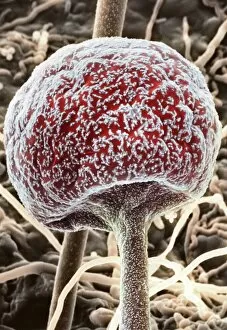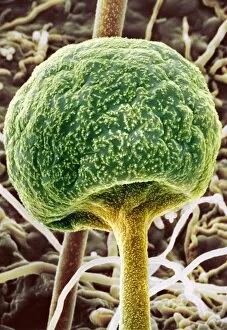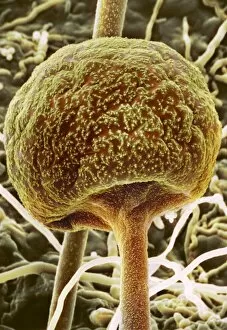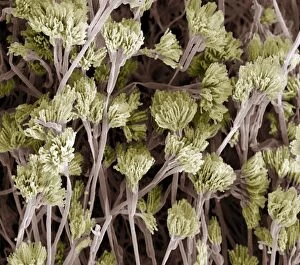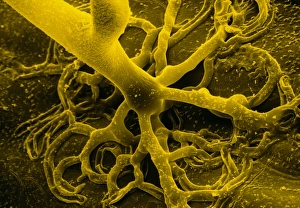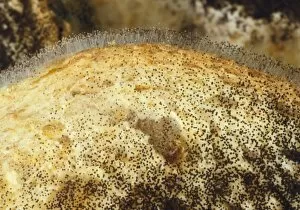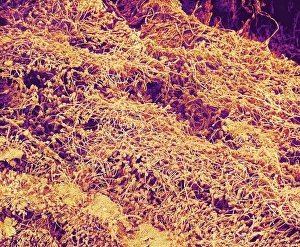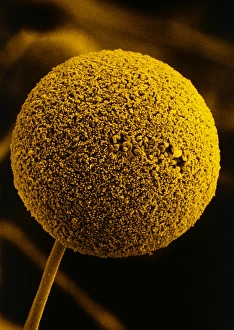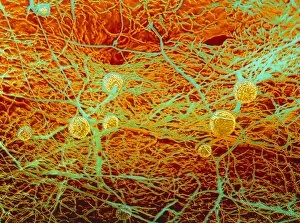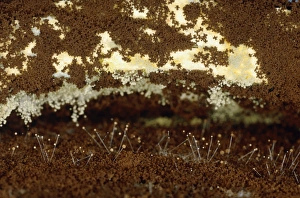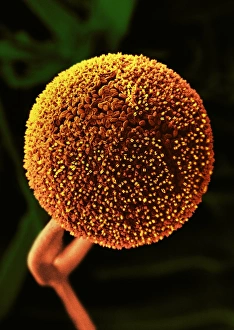Bread Mould Collection
"Bread Mould: Unveiling the Intricate World of Fungal Growth" Delving into the microscopic realm
All Professionally Made to Order for Quick Shipping
"Bread Mould: Unveiling the Intricate World of Fungal Growth" Delving into the microscopic realm, SEM (Scanning Electron Microscopy) images reveal fascinating details about bread mould. In ancient times, wooden moulds like the Mold for a Eulogia Bread were used to shape and bless loaves from the 600s to 900s. Captured under SEM C017 / 7127, SEM C017 / 7129, and SEM C017 / 7128, these intricate structures showcase the diverse forms of bread mould. The Light Micrograph (LM) at a staggering magnification of x850 exposes Rhizopus sporangia in all their glory – an awe-inspiring sight that spans across A4 dimensions. Penicillium fungus takes center stage in this captivating display with its unique characteristics highlighted through detailed SEM imagery. Its distinctive spores are showcased multiple times as they take on different shapes and sizes. As we explore further into this hidden world, more bread mould varieties come to light through additional SEM captures. Each image provides a glimpse into their complex structures and textures. However, it is not just their physical appearance that captivates us; it is also their role in nature's cycle. These resilient organisms play a crucial part in decomposition processes while contributing to nutrient recycling. Intriguingly, false-colored SEM images expose rhizoids - root-like structures that anchor bread mould firmly onto surfaces. This visual representation offers insight into how these fungi establish themselves within their environment. The study goes beyond mere curiosity; it holds significance in various fields such as food science and medicine. Understanding its growth patterns can aid in preventing spoilage or even unlocking potential medicinal properties found within certain strains. So next time you spot those fuzzy patches on your loaf or encounter mysterious growths elsewhere – remember that beneath our eyes lies an entire universe teeming with lifeforms like bread mould, silently shaping the world around us.


